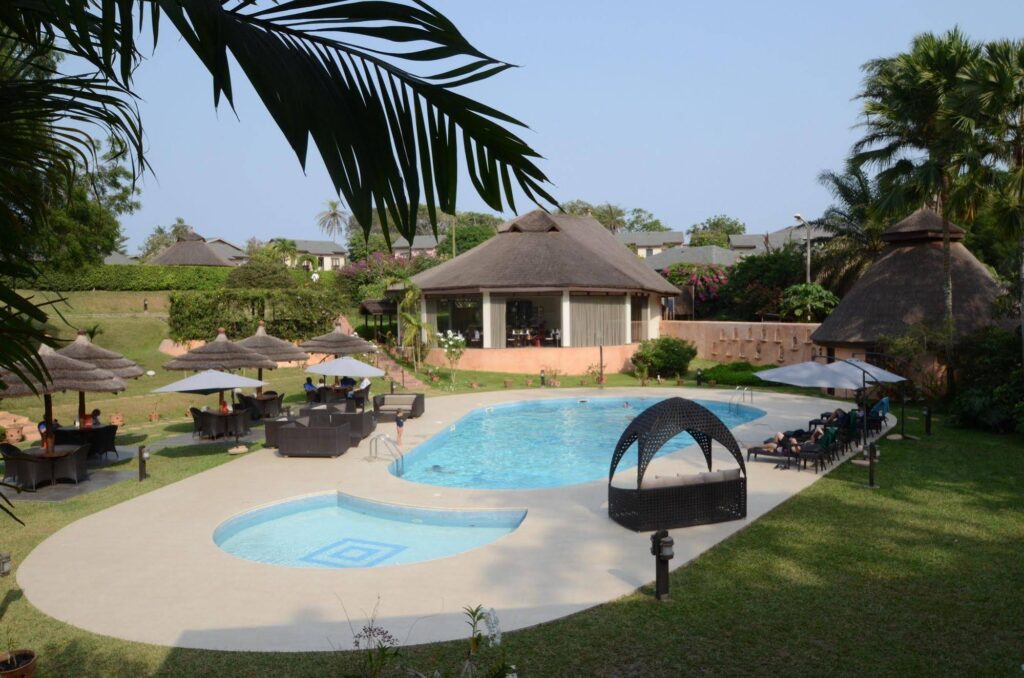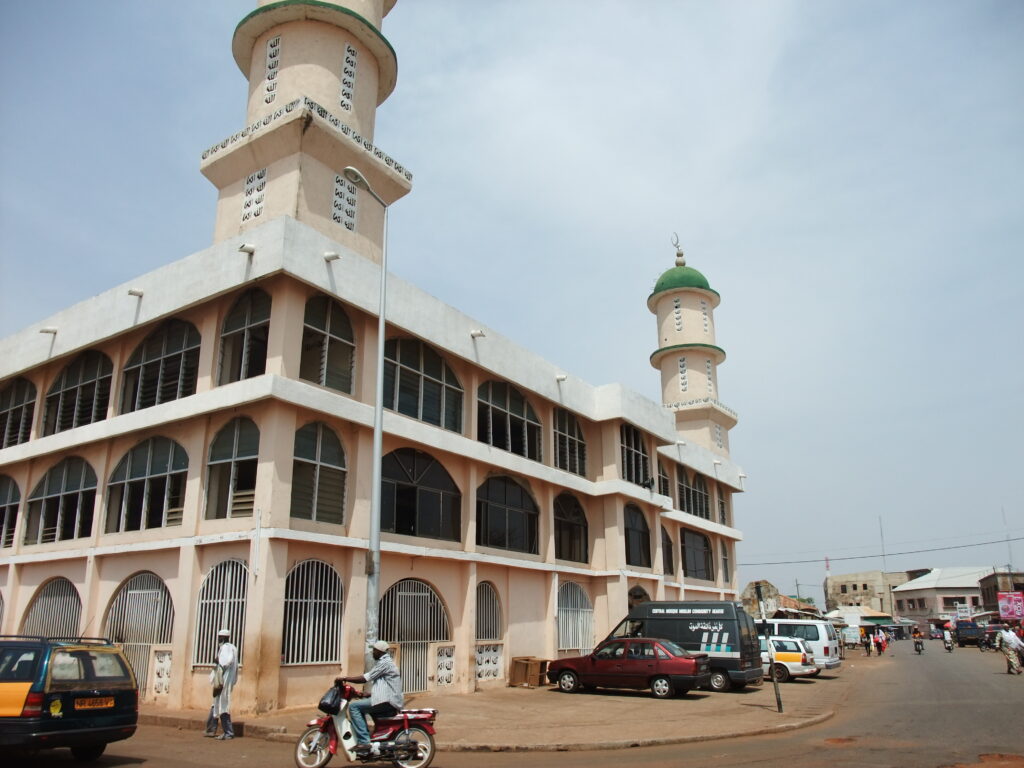Welcome to our guide on the 10 largest cities in Ghana. Ghana, located in West Africa, is a country known for its rich culture and history.
In this article, we will take you on a journey through some of Ghana’s most prominent urban centers, each with its own unique charm and significance.
Accra, the capital city of Ghana, is a bustling metropolis where tradition meets modernity. It is home to government institutions, businesses, vibrant markets, and a thriving arts and entertainment scene.
Kumasi, often called the “Garden City,” is the cultural capital of Ghana, known for its colorful festivals and historical landmarks.
Tamale, the capital of the Northern Region, showcases Sudanese-style architecture and a rich cultural heritage.
Sekondi-Takoradi, a major port city, plays a significant role in Ghana’s oil and gas industry and serves as a center for trade and commerce.
Tema, a planned industrial city, is Ghana’s largest seaport and hub for economic activities. These cities, among others, contribute to Ghana’s vibrant urban landscape and offer a glimpse into the country’s diverse culture and development.
Throughout this article, we will explore the 10 largest cities in Ghana, we will also explore the unique characteristics, landmarks, and cultural attractions of these cities.
Whether you’re planning a trip or simply want to expand your knowledge, join us as we uncover the largest cities in Ghana and what makes them special.
Let’s dive into this exciting journey of discovery the largest cities in Ghana together!
- Accra
- Kumasi
- Sekondi-Takoradi
- Tamale
- Tema
- Cape Coast
- Obuasi
- Koforidua
- Wa
- Techiman
1. Accra
Accra, the capital of Ghana, is the country’s largest city and a bustling metropolis in West Africa. With a population of around 2.27 million people, it is a vibrant hub known for its thriving economy, diverse communities, and rich cultural heritage.

Situated along the Atlantic coast, Accra offers a range of attractions for visitors to explore. The National Museum of Ghana houses an impressive collection of artwork and historical artifacts, providing insights into the country’s rich heritage. The iconic Osu Castle, once a colonial stronghold, now serves as the seat of government.
Accra is also a vibrant trading center, with local markets offering an array of goods, from fresh produce to traditional crafts.
Despite its size, the city maintains a welcoming and friendly atmosphere, making it an inviting destination for tourists.
Whether you’re interested in delving into Ghana’s history, immersing yourself in its vibrant culture, or simply experiencing the energy of West African life, a visit to Accra is a must.
2. Kumasi
Kumasi, the second-largest city in Ghana with a population of nearly 3 million, is a bustling commercial and industrial hub located in the Ashanti region. This vibrant city is famous for its vibrant culture, ancient landmarks, and bustling markets.
Kumasi is home to significant cultural sites, including the Manhyia Palace, which was once the residence of the Ashanti Kingdom, and the Kumasi Fort, now transformed into the Kumasi Military Museum.
Exploring the city’s vibrant markets is a treat for visitors, offering a wide array of goods such as fresh produce, local street food, and traditional fabrics and crafts.
Education and research also thrive in Kumasi, with several universities and research institutions making it a hub for knowledge and learning.
With its rich historical heritage, lively culture, and warm hospitality of its people, Kumasi is a destination that shouldn’t be missed for anyone traveling to Ghana.
3. Sekondi-Takoradi
Sekondi-Takoradi, a prominent city in Ghana, stands as a major port on the Gulf of Guinea. With a population of approximately 600,000, it plays a crucial role in Ghana’s economy, serving as a significant industrial and economic center. The city’s key industries encompass shipbuilding, tobacco, and timber.

Benefitting from a well-established railway connection, Sekondi-Takoradi wields considerable influence, positioned along the railway route connecting Kumasi and Accra.
It’s worth noting that Sekondi-Takoradi is the result of the merger of two neighboring cities, Takoradi and Sekondi, which took place in 1946.
4. Tamale
Tamale, a lively city located in the Northern Region of Ghana, stands as one of the country’s largest urban centers.
Positioned on the fertile Guinea savanna, renowned for its fertile soil and diverse wildlife, Tamale boasts a rich historical background and is celebrated for the warm hospitality of its residents.

The city serves as a thriving hub for business and trade in the Northern Region, housing a bustling market where a wide array of goods, ranging from food to clothing to electronics, are traded.
Additionally, Tamale hosts various governmental institutions, schools, and hospitals, making it a vital center for education and healthcare services in the region.
Tamale takes pride in its vibrant cultural festivals and events, most notably the Tamale Cultural Festival, which pays homage to the rich heritage of the Northern Region’s people.
Tourists flock to the city to experience the natural wonders of the area, including the remarkable Mole National Park and the historic Larabanga Mosque, one of West Africa’s oldest mosques.
Nevertheless, Tamale faces notable challenges such as poverty, inadequate infrastructure, and limited access to essential services.
However, the city’s leaders are dedicated to addressing these issues, striving to foster growth and ensure Tamale’s prosperity and vibrancy for the future.
5. Tema
Tema, a city within the Accra metropolitan area, lies to the east of the capital and shares similarities with Teshie. However, Tema stands out due to its prominent role in economic activities, thanks to the presence of a major seaport.
The city’s seaport plays a crucial role in facilitating container traffic, handling goods destined for neighboring landlocked countries such as Burkina Faso and Mali.
The Ghana Ports Authority (GPHA) and Bollore Africa Logistics are the key organizations responsible for the efficient operations of the port.
6. Cape Coast
Cape Coast, located in Ghana’s Central Region, is a captivating city with a population of approximately 169,894 people. Known for its stunning beaches and breathtaking natural surroundings, the city holds a rich history and a vibrant mix of cultures.
Cape Coast is a significant destination for history enthusiasts, offering a variety of historical sites and museums that shed light on the dark period of the transatlantic slave trade.
Among these is Cape Coast Castle, a UNESCO World Heritage site that once served as a trading post for African slaves.
The city’s historical significance makes it a top choice for tourists seeking to immerse themselves in Ghana’s captivating past.
7. Obuasi
Obuasi, located in Ghana’s Ashanti Region, is a vibrant city with a population of over 175,043 people. The city is renowned for its rich history in gold mining, dating back to the 1890s.
Even today, Obuasi remains a prominent hub for gold mining in Ghana, with several large mining companies operating in the area.
One of the notable attractions for visitors is the Obuasi Gold Mine, which stands as one of the country’s largest and oldest gold mines.
Obuasi’s gold mining legacy has left a significant mark on the city, making it an intriguing destination for those interested in the industry’s history and its impact on Ghana’s economy.
8. Koforidua
Koforidua, located in Ghana’s Eastern Region, is a bustling city with a population of approximately 183,727. As the capital of the Eastern Region, Koforidua is known for its thriving business and industrial sectors, contributing to the region’s economic growth.
Koforidua is not only a center for business and education but also a vibrant cultural destination. Throughout the year, the city hosts various music and dance festivals, including the highly anticipated Koforidua Easter festivities.
These events showcase the rich cultural heritage of the region and provide a vibrant celebration for both locals and visitors.
For those exploring Koforidua, there are notable landmarks to visit, such as the majestic Boti Falls and the impressive Akosombo Dam.
These attractions offer captivating experiences, drawing nature enthusiasts and adventure seekers alike.
With its blend of economic opportunities, educational institutions, cultural festivities, and natural wonders, Koforidua presents a vibrant and diverse city that invites exploration and discovery.
9. Wa
Wa, located in Ghana’s Upper West Region, is a captivating city with a population of just over 102,446. As the capital of the Upper West Region, Wa holds both natural beauty and a rich cultural heritage.
One of the notable attractions in Wa is the Wa-Na Palace, the traditional residence of the Wa-Na, the esteemed leader of the Wa people. This historic site offers a glimpse into the city’s cultural history and traditions.
Wa is known for its distinctive architecture, characterized by mud-brick homes and structures adorned with conical thatched roofs. This unique architectural style adds to the city’s charm and sets it apart from other cities in the region.
Apart from its cultural heritage, Wa is blessed with stunning natural surroundings. The city is surrounded by picturesque landscapes, showcasing the beauty of the Upper West Region. From rolling hills to serene rivers, nature lovers will find plenty to explore and appreciate in this scenic destination.
10. Techiman
Techiman, located in Ghana’s Brong-Ahafo Region, is a bustling city with a population of approximately 133,690. As a commercial hub, Techiman plays a vital role in the region’s economy, particularly in the vibrant market and agricultural sectors.
The city is renowned for its production of cash crops such as cocoa, coffee, and palm oil. Numerous companies and processing facilities are based in Techiman, contributing to its thriving agricultural industry.
Techiman’s rich history is evident in its array of historic sites, including the Techiman Fort. Built by the British in the 19th century, this fort served as a military stronghold during the colonial era.
Also read: 12 Best Places to Visit in Guinea Conakry
Exploring these historic sites offers visitors a glimpse into the city’s past and its significance in the region’s history.
In addition to its economic and historical importance, Techiman boasts a lively atmosphere and a welcoming community.
The city’s vibrant market, where a wide variety of goods are bought and sold, adds to its charm and provides a unique shopping experience for both locals and visitors alike.
Source
https://mrpocu.com/15-largest-cities-in-ghana-you-should-know/

